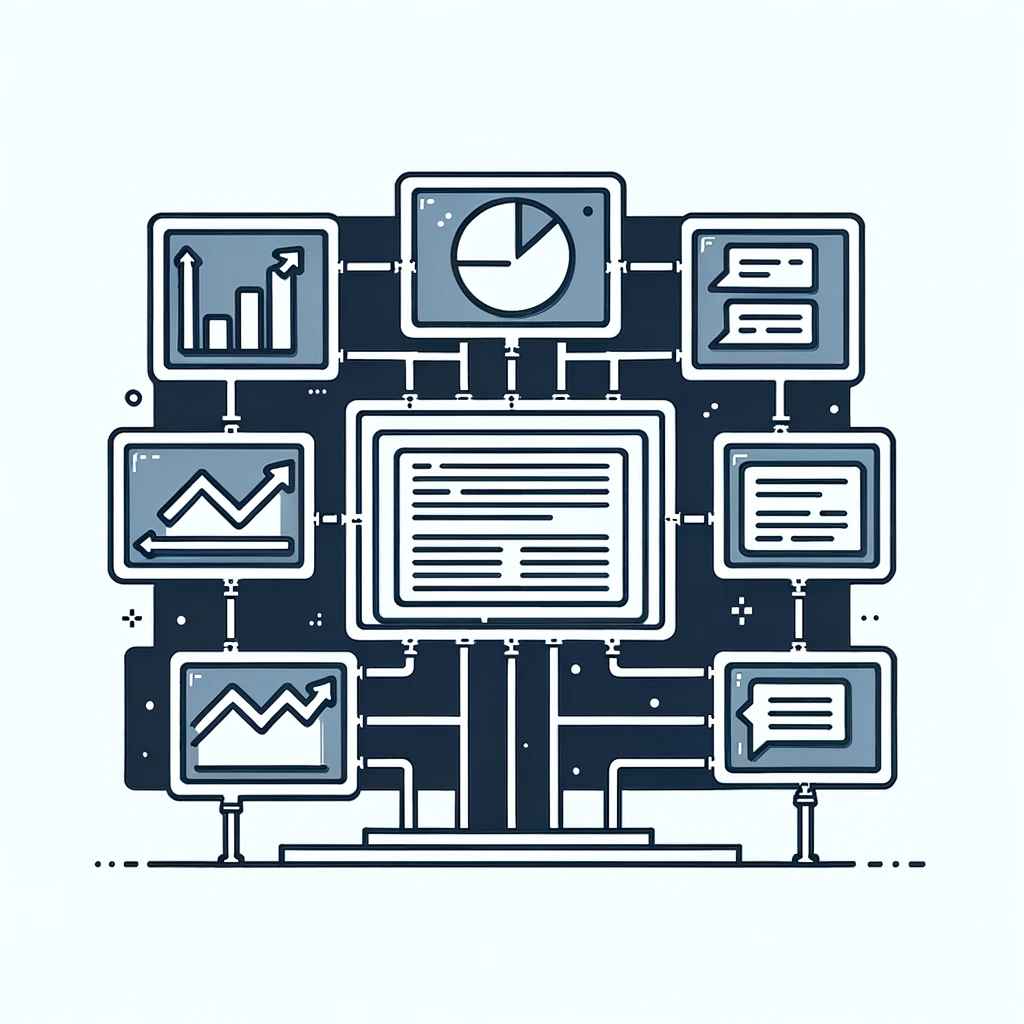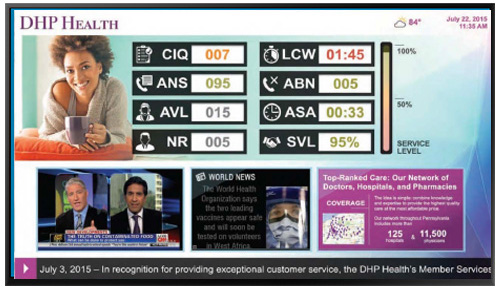Effective employee communication is a key factor — perhaps the key factor — in the success of any organization. It’s the two-way street for both the employer and every employee to make sure that they are on the same page, and the basis of a happy and motivated workforce.
That said, getting employee communication right can be easy to overlook. Companies are constantly trying to find ways to keep employees engaged, but there’s never enough time or resources to do so. Is it email to the rescue?

It will come as no surprise that email is one of the most popular and widely used forms of internal employee communication: a cost-effective, simple, fast, and convenient way to send messages to employees. It’s a great way to “market” your organization to your workforce, with @ourbusiness messages that range from company updates, industry news, policy initiatives and the latest “from the CEO.”
Even so — email has a bad rap. With every new messaging app that’s released, email is decried as “on its last gasp,” and marked for death due to its drawbacks: perceived as old school, and the bane of overloaded inboxes.
Too many messages coming in all the time are difficult (impossible!) to track or stay on top of. It’s far too common for some people in every organization to get so many emails every day (every hour!) there’s no time to respond to them all. Perhaps the main potential downside of email is that it can be impersonal, especially if you’re sending a message to multiple employees you don’t know very well.
Lacking relevancy, your emails can lead some employees to conclude they may as well ignore them all together. In this instance, poorly executed email can be even worse than unread. This approach to email risks having a negative impact on your company by reducing employee engagement and — by consequence — their productivity.
Can email be a tool for effective employee communication? Why are some emails more successful than others? And how can you make sure yours make it into the winner’s circle?
By using an effective employee communication platform as the basis for your email program, you can elevate the messages you send to your employees from mere delivery to a communications plan. This is where your internal communications professionals can personalize emails based on a recipient’s role, media preference and other relevant criteria; and where managers can understand which messages are making an impression — and why.
The secret to high-impact workplace communication? Emails that are personalized, timely and meaningful.
Targeting Information Overload in a Digital Workplace
As the number of emails in people’s inboxes continues to grow, it becomes difficult to prioritize what needs prompt attention and what can be ignored. Employees spend hours of their day simply reading and responding to emails. Is this what you hired them for?

A study by Kronos found that 60% of employees feel engulfed by emails. Your people are being overwhelmed by the amount of information they receive every day. Information overload is a real disease. And targeted email is the cure.
To help employees manage their busy schedules — and feel included in your company — the use of targeted messaging is critical to make email more relevant. With targeted emails, employees are relieved from crowded inboxes and can focus on useful content that has application for them in their professional roles. This form of email is customized to the types of communications that they like, and their associated behaviors. Your sales agents don’t need the same training notifications as your IT pros. Your IT pros may have shown a greater tendency to respond to messages that include a video element. Your more senior employees tend to open important emails in the late afternoon.
Because these emails are very much for specific employee groups — perhaps even individuals — you are building a better relationship with your audience and making them feel more appreciated by the company.
Targeted email marketing will ensure your people find what they’re looking for and reduce the amount of time spent on searching out information. The ability to segment and target specific audiences will improve the ROE — the Return on Email — of your internal communication. With compelling content delivered to the right employee at the right time in the right format you increase the chance for legitimate connection and quantifiable improvements in work performance. In related fashion, with targeted email there is the ability to provide a clear message that helps people make decisions and take action.
Who holds the key to targeting? You may want to fire off an email to your HR professionals for those answers. Then integrate everything they know (and they know a lot) through your employee communication tools. This dynamic partnership translates human resources data (location, roles, demographics, length of employment and other factors) into tailored email messaging — marketing, really — closely aligned with your employees’ interests and preferences.
Are You Effectively Communicating?

Are your emails only text-text-text? Or are you exploring the possibilities of a more media rich communication? Consider adding visuals to employee emails to further drive-up engagement. A study shows that email marketing with visuals has a 76% higher open rate and a 98% higher click-through rate.
Perhaps you’re looking to support a wellness initiative for overtaxed teams, and you want to promote the idea that they make use of their PTO. Bullet points in an email tell one type of mental health story; an image of a relaxing getaway tells a better one. The right employee communication strategy will help accelerate a positive message like this, with included templates and image libraries for creating these custom communications.
Transforming Emails into Conversations

Ask your employees about their view on typical email, and they’ll likely rate it as a necessary evil. But what if you could transform that impression into a dialogue they look forward to? And one they take part in?
Imagine your employee emails as conversations: better yet, activate them with two-way invitations through your workplace experience platform. Give your workforce a chance to like, to hashtag and share content, and to add their own thoughts and feedback in real-time. With coordinated links to relevant content on your intranet — such as employee resources, shared files, and business applications — your emails now encourage collaboration and streamline productive workstreams.
The Value of Multi-Channel Employee Communications

Employees are no longer restricted to the office to connect with your company: the time of the hybrid and even remote worker is now. While that has proven to bring many benefits, these employees are not always able to communicate regularly with their coworkers through traditional channels. (Some, such as warehouse or frontline workers, may not even have access to company email.) This lack of a consistent, effective communication channel can lead to misunderstandings, complications, and a lack of inclusive messaging.
How can a new, empowered email play a role for all employees? Once again, by managing your email messages thorough an effective communication platform, your internal communications gain new opportunities. Intelligent content management is the system for taking the same content created for email and then publishing it via multiple channels.
SMS — text messaging — is fast, convenient, personal and available to anyone with a phone, anytime, anywhere. Remote and hybrid employees can receive alerts related to important and relevant communications, with links to review more detailed content at a convenient time. At the next level, a company-sponsored mobile app can consolidate and offer that email content in the form of social media-style news feeds. Both of these examples contribute toward creating a sense of communications unity among your employees.
Multichannel employee communication can improve remote employee engagement and relationships by allowing employees anywhere to collaborate, share files, and even chat with each other on different platforms without having to be in the same place at the same time. For your communication professionals, this is possible via a single, intuitive user interface that combines and coordinates all of your channels.
Measuring Employee Communication, It Matters
In addition to the added communication benefits of convenience and reach, the right platform needs to enable measuring employee communication performance and your content quality through KPIs. Email may seem “send and done” — but they can be rich in measurable points of interaction that can help you understand and evolve the effectiveness of your employee communication.
Before you start to measure, it’s always good to establish objectives for your email communications. Some questions to ask of yourself or your communication professional:
- What do you hope to achieve?
- Which employees do you need to reach?
- What initiative do you want to run?
- What are the best content types to use?
- How will you measure success?
With those objectives in mind, it’s time to start measuring employee communications. Your workplace experience platform should be able to track many of these metrics, and provide comprehensive reports that allow you to focus on a specific send, or larger side-by-side comparisons across “campaigns.”
- Opens & Clicks will help identify your most engaging content.
- Multiple Opens will tell you an email’s content was of particular interest and worth revisiting.
- Best Performing Links will give you insight into the type of information that is most likely to get your workforce to take action.
- Location Tracking can optimize your emails for different regions
- Open Time — or your Engagement Distribution Timeline — can help you see what times of the day employees open your emails the most. (And allow you to adjust accordingly for the future.)
- Read Time can tell you if your content is actively keeping your employees’ attention.
- Employee Feedback can be everything from a survey to a star to an emoji — segmented by individual, department or at the company level.
- eNPS — or your Employee Net Promoter Score — can help determine who is sharing your content within your organization.
- Device Type is a way to discover the technology your employees are using to read your email, influencing your layout and content decisions to fit the most popular screen sizes.
- Soft & Hard Bounces can identify technical or software problems.
Will your emails include click throughs to your intranet? They can yield additional levels of measurable activity, including page visits and logins, as well as intranet read-receipts — helping you to further measure whether employees are actually receiving and reading important content and updates.
The ultimate point of these analytics is in support of the engaged employee. Measuring communication KPIs can identify the type of content and knowledge that employees want. (And also allow you to nix the content that is least effective.) Actively engaged employees are more positive about their work, feel more respected for their contributions, and are more dedicated to their employer. Why is this a good email goal for your company? Based on a McKinsey survey, employee productivity jumps by up to 25% when employees feel connected?
What are the Best Practices for Writing Employee Emails?
Email communication with your employees should be based on professional common sense. Good email is a conversation, and you should strive for the same type you’d no doubt like for yourself: clear, concise and friendly.
No matter what format or media your email includes, here are some best practices to get the best results:
- Provide all necessary information in an email so there’s no need for follow-up questions from your employees.
- Include links to related resources — articles, files, or business apps — which can help your employees do their work better.
- Be specific about what you want from your employees, with a clear call to action so that they know what they need to do next.
The Power of Employee Communications is in Your Hands
Email will not be your only form of communication with employees. It may not even be your primary. But with the strengths of a modern employee communications platform adding to its capabilities, it’s a direct line to share your messages and connect with your employees in personalized ways that matter to them as professionals — and people.
It’s important to remember that email is not just a communication medium, but an opportunity for you to make a lasting impression on your employees — even more so, a lasting connection with them. Combined together, that’s the potential for a lasting and positive impact on your company’s culture — and your bottom line.
But it’s not just about emailing more emails. It’s about how you use the right channels to communicate with the right people at the right time — when they need it most.
Ready to hit “Send”?









